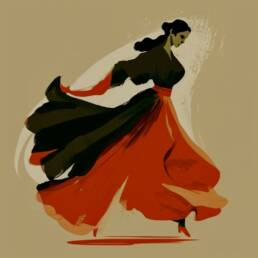The Bedia Prostitutes
- History
- Culture
- Music
The Second Feature on our Women’s History Month is the tale of the Bedia Community of Nomads who have been branded as criminals by the British and forced to earn a living as prostitutes over the course of their intriguing history.
The word Bedia is a corruption of the word ‘behara’ meaning a forest dweller, the community of nomads is believed to have come from the line of Rajputs, the dissimilarity in their fortunes, however, is startling to say the least.
The Bedia community, mostly living in parts of central and northern India, have been traditional folk dancers. It is believed that members of the community used to entertain artisans who had come to build the iconic Taj Mahal during the mid-17th century.
Gradually these people became highly sought after for their various talents by kings and zamindars and even by foreigners in the 18th and 19th centuries. They are also said to have enjoyed patronage of the Mughal Generals as they provided sexual pleasures to their soldiers.
In the mutiny of 1857, the Bedia people were used by rebel rajahs and princesses to aid their armies either as messengers or as spies in their fight against the British , this led them to be branded as criminals when the war got over.
The laws proved to be detrimental for the community, who in order to earn a living started using their talent for different purposes, particularly in the field of prostitution.
Today the birth of a girl child in the Bedia community is celebrated with pomp unlike in many other communities, though the reasons cannot be further away from each other.
As soon as a girl hits puberty, she is considered ready and given two options, either get married or go into prostitution. Though some are not so lucky to be given such choices. They are taught the tricks and nuances of the trade by elder members of the community
After her first menstruation around the age of 16 or 17, a symbolic function titled “Nat Uthari” is celebrated by deflowering the girl by her first client in exchange for a handsome gift in cash or kind.
Bedia women are forced to remain single, and they continue to engage in prostitution well into their 30s. Romantic relationships of any kind are strictly prohibited.
The economic freedom however proves anything but beneficial for the Bedia woman, their fate and life remain in a stranglehold of age-old traditions and a patriarchal society that only considers them as mere objects.
Even though the community is now considered as Scheduled Castes by law in 1950, they receive negligible benefits from government schemes which complicates their predicament even further.
These days many NGO’s and self-help groups like Samvedna are trying to reach out to the community and spread awareness regarding female education and its benefits.
Though some have been lucky in venturing out, the majority of the community still remain in perpetual struggle between traditions and individual identity.
Sources
- Chaste Wives and Prostitute Sisters: Patriarchy and Prostitution among the Bedias of India by Harasankar Adhikari
- https://www.thebetterindia.com/
- https://www.samvednaindia.org/
- https://www.youthkiawaaz.com/
- IndiaToday
- BBC







